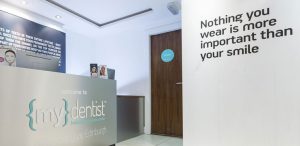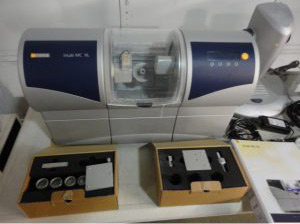Don’t forget the patient
(by Dr Iulian Popescu)
Modern dental imaging technology is amazing.
We now have digital x-rays that throw an image to the dentist’s computer screen in seconds. ‘OPG’ machines can create a panoramic radiograph (a 2d image of the patient’s whole dentition). We even have digital scanners that can create a 3-D map of the inside surfaces of a patient’s mouth.
Behind the scenes, the latest generation of computer aided design software (CAD) help develop digital models. These can drive milling machines and additive manufacturing devices (3D-printers) with the near-perfect accuracy needed to create the tiny veneers, inlays and even crowns that we use.
The advantages to dentists and dental practice managers are obvious; quicker diagnosis, reduced lab-costs, faster turn-around, better throughput. But what does this mean for patients?

Appointments need to be convenient for the patient as well as the dentist (photo: MyDentist – Edinburgh)
Booking a visit to the dentist
For a patient, a visit to the dentist starts with booking an appointment. Now believe it or not, some patients have other things to do. Yet at the moment, many practices set times for different types of appointment based on the type of work required. This is often driven by when the courier calls to deliver and collect lab work.
A patient with young children at school may have to fit appointments around available child care. Or maybe that patient has a long commute (two hours is not uncommon for people working in London), so even the first appointment in the morning means taking at least half-a-day off work.
A practice that can break the link between the arrival of ‘the lab man’ and the appointment diary will give patients far greater flexibility in when they can attend.
Fewer visits
What if the prosthetic were created on the same day it was prescribed? Wouldn’t it be a good thing for a patient to have a crown prep and fit on the same day?
While it’s unlikely that many practices will be able to create the device while the patient is in the chair, it is possible to create many the same day. A patient could have the prep in the morning and the fit in the afternoon. That would indeed make a huge difference to patients with long commutes – a large part of the population near big cities such as London.
For the dentist and practice this also has the clear advantage of quicker patient turnaround and therefore both improved cash-flow and potentially higher patient volumes.

Sirona CEREC inLAB MC XL Milling & inEOS Red Scanning Dental Units (source: Novadentals.com)
Convenience and imaging
Today’s society is very ‘convenience conscious’. We see it within dentistry, not only as patients struggling to find time in their diaries for appointments, but also as demand peaks just before Christmas, Easter and the summer holiday months; people don’t want the inconvenience of toothache during theses festivities.
Dental professionals we get very excited about our fabulous imaging technologies, and all credit to the manufacturers such as Kodak, Carestream, Dentsply Sirona and Roland (and others) for their fabulous inventions and developments.
However, since 1980 when CEREC (Chairside Economical Restoration of Esthetic Ceramics, or CEramic REConstruction) was first developed by W. Mörmann and M. Brandestini at the University of Zurich, the ultimate beneficiary should always be the patient.
As use of advanced imaging and CAD/CAM technology becomes more widespread, dental practices will need to remember this if they wish to be successful. I believe strongly that our convenience conscious society is already moving to a position where it expects patient care to extend beyond the dental surgery into all aspects of the relationship – and that includes appointment and treatment management.
We would love to hear your opinions and experiences about the differences being made by advanced imaging and modelling technologies. Or call us if you have a technology that you are bringing to market in the UK.
About the writer
Iuian Popescu is a registered dentist, currently practising in Sudbury, Suffolk in the East of England.





Pingback:Precision PR Limited ¦ bringing lab work in-house makes life better for all
Pingback:Precision PR Limited ¦ 3D Modelling in Medicine and Surgery